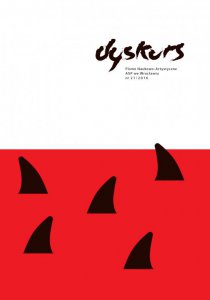WŁADZA VS. SZTUKA W PRL-U I DZIŚ
POWER VERSUS ART IN POLISH PEOPLE’S REPUBLIC AND TODAY
Author(s): Łukasz GuzekSubject(s): Philosophy, Language and Literature Studies, Fine Arts / Performing Arts, Political Philosophy, Sociology of Art
Published by: Akademia Sztuk Pięknych im. Eugeniusza Gepperta we Wrocławiu
Keywords: TOTALITARYZM; DEMOKRACJA; STALINIZM; ODWILŻ; REPRESJA; MAREK WŁODARCZYK; KONCEPTUALIZM; KONTEKSTUALIZM; POLSKA SZTUKA WSPÓŁCZESNA; WYBORY 2015; TOTALITARIANISM; DEMOCRACY; STALINISM; THAW; REPRESSION;
Summary/Abstract: POWER VERSUS ART IN POLISH PEOPLE’S REPUBLIC AND TODAYThe basis of this study is Mark Wlodarczyk’s paper on research methodology of art history in Polish People’s Republic, especially in the 1950’s. Włodarczyk put the thesis that power in that decade. The basis of this study is Mark Wlodarczyk’s paper on research methodology of art history in Polish People’s Republic, especially in the 1950’s. Włodarczyk put the thesis that power in that decade, standing under the banner of Stalinism, introduced elements of a thaw in the art, but at the same time they continued the policy of repression. Meltdown was an immanent part of policy. However, policy enforcement can be seen in the pragmatics of government throughout the entire period of communism.Hence the thesis of this article on the dialectics of thaw and repression as the dominant instrument of power used in art, as this area of power relations is discussed here. Among the examples, there are mainly those from the seventies, for a period of domination of conceptual art is considered a period when artists concentrated on the autonomy of art, and abandoned their social engagement in order to avoid repression. That consensus with the government, however, was apparent. Artists still challenged the tolerance of power and thus triggered a dialectic of thaw and repression,and the government showed its totalitarian face. After 1989, the power in a democratic system is distributed, therefore the dialectic of thaw and repression loses its functionality. Also, Włodarczyk described the situation inPoland after the elections of 2015. He believes that political and totalitarian method of governance brings back functionality of dialectic thaw and repression against contemporary art.
Journal: DYSKURS Pismo Naukowo-Artystyczne ASP we Wrocławiu
- Issue Year: 2016
- Issue No: 2 (21)
- Page Range: 36-47
- Page Count: 12
- Language: Polish

